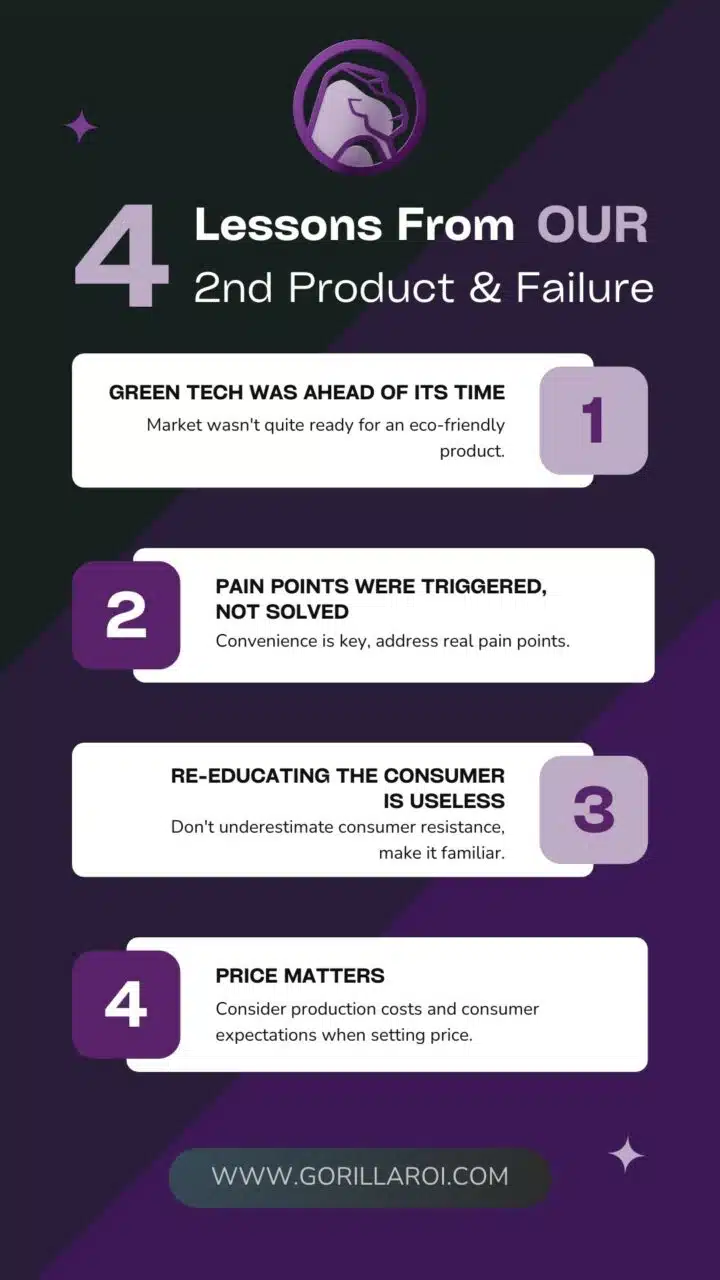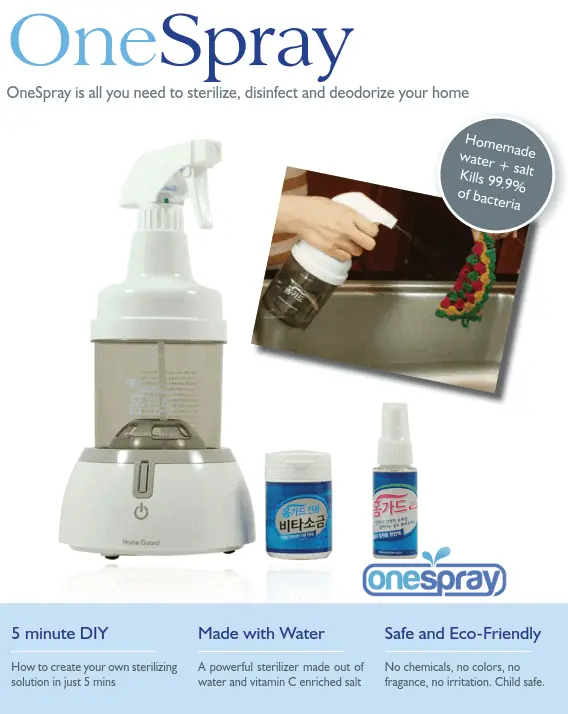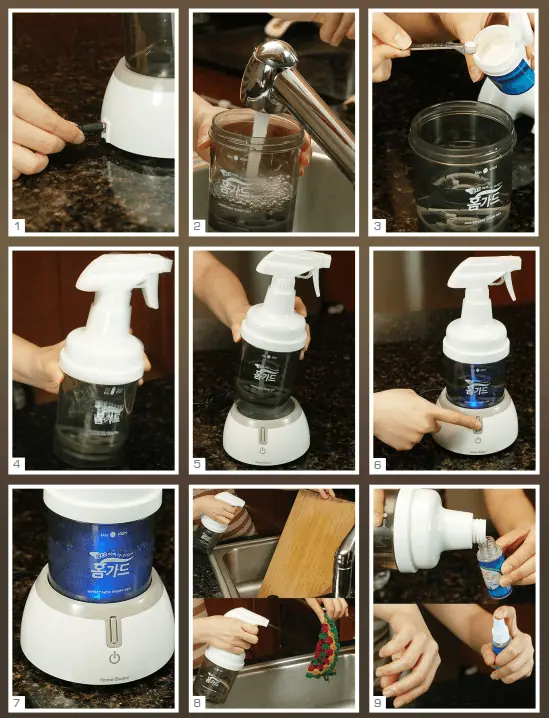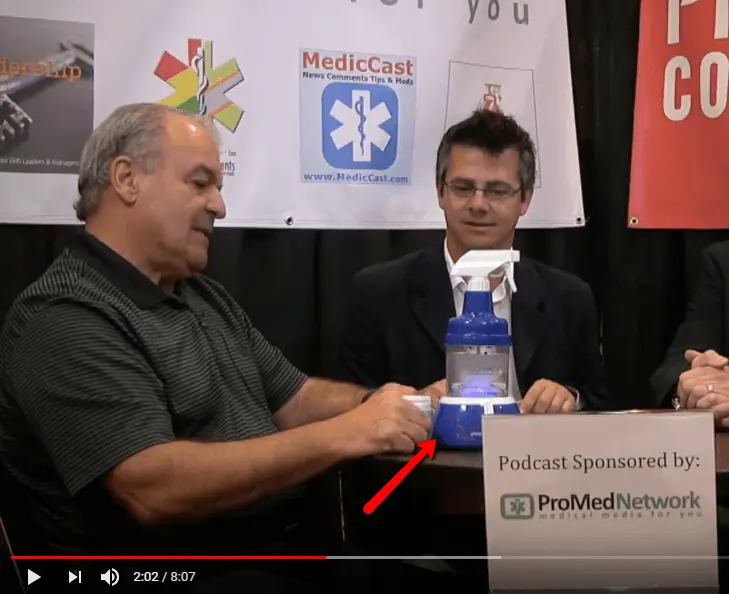
So far on this blog, I’ve pulled back the curtain of our very first product and how it flopped before it began.
I ended up throwing more money down the toilet and it was a good thing that I had a day job, as well as another side business, that was funding all of this.
If it wasn’t for those two income streams, I wouldn’t be writing this today.
I don’t know about you, but the stat where they say that most businesses fail within the first 3 years is true for us.
Those few years were rough. But we plowed ahead to product #2.
Are you ready?
Introducing…

Not bad for logo ideas from 2012.
As you can tell by the name, it’s a “spray” product.
The backstory is that my wife hates germs. Doesn’t like touching door handles or surfaces outside because who knows what’s been going on.
While browsing online, we learn about this new sprayer product that is 100% natural and green.
But it’s not just a regular spray, it’s a green tech product.
Check out my flier.

The quick science behind the product is that you simply mix tap water and a tiny amount of salt with citric acid into the spray bottle and then power it up for 5 minutes.
There’s some plasma emission and the base starts to electrolyze the mixture and separates the chlorine from the salt to create a solution that is 80-200x stronger than off the shelf chlorine, without the harshness.
What this means is that it can literally sanitize anything. Toilets, floors, cutting boards etc. You can touch it with bare skin and it won’t burn. Safe to use around children and pets without worries.
This Was The ‘Chosen One’
This was a product that we felt had a lot of potential
- It was revolutionary
- It had science behind it
- It was FDA approved
- It had clinical lab test results showing it worked
- It solved a need in every household
So What Went Wrong?
It will be easier to explain via our instructional image.
These are the instructions that were to be included.

Over the years, we’ve learned that a product should always solve at least one of 3 universal needs.
- Will it save me time?
- Will it save me money? (or will it make me money?)
- Will it make it convenient? (or will it make me comfortable?)
In OneSpray’s case, although it would solve problem #2, the cost savings didn’t outweigh the increase of time required and the inconvenience.
After a long meeting with a mentor, we came to see that the product was cool, but it would collect dust once somebody purchased it.
The product had the right idea, but in 2012, the demographic of hardcore green and natural consumers barely existed.
The market wasn’t ready for it.
Oh, and try convincing consumers to spend $80 when they can grab a bottle of cleaner for $2-5, which ends up being quicker and easier to use anyways.
Knowing When to Fold
The saving grace with this product is that we folded our cards before we got too deep into it. It wasn’t like we were trying to create a revolutionary machine learning-based software or product that would have taken years to create.
All we did was pay for a sample, make a logo, take photos, make a product brochure and ask people what they thought of the idea.
We followed the 6 lessons from our first failed product.
- We didn’t hire a marketing agency
- We only ordered a couple of samples
- We asked around to check the demand and feasability
- We didn’t care about being first to market
I’m glad the feedback wasn’t positive.
Around one year later, other companies started to private label the product and even exhibited at shows.
See the screenshot below from youtube. Yup that’s OneSpray.

Did a quick search and the product no longer exists.
The company from the video above is gone, as well as the parent company.
Interestingly enough, our old domain of onespray.com is now owned by another brand called “OneSpray” with a very similar concept. ????
4 More Lessons Learned
1. We were too early
Sounds silly, but the market wasn’t ready for green tech at that time. There was also little interest back then compared to now, where the market has exploded with options and products.
Just recently, we exhibited at the Natural Expo show in Baltimore and the place was rocking and packed with natural and organic food, products, and this and that. If we were to try again, it would be much easier with a receptive audience. People nowadays are also making their home more smarter, so there is more potential now than before.
I don’t like being the market leader. Don’t have deep enough pockets for that.
2. Pain points were triggered, not solved
The inconvenience of having to create a mixture, wait 5 minutes for the conversion to finish was too much of a hassle.
It was like picking at a scab instead of relieving it.
Never relent in the pursuit of incorporating a real fix to one of the universal pain points in your product.
Find a way for your product to:
- save time
- save money
- make it convenient
3. Re-educating the consumer is useless
Trying to change habits of consumers is impossible unless you have millions in marketing budget. People are set in their ways and they do not trust new small companies.
Another failing point with the product was that the mixture is so clean that it had no smell. It worked too well for its own benefit.
Consumers are so used to smelling chemicals and fake fragrances from cleaners that something doesn’t “look” or “feel” clean unless there’s a strong smell or visual component like foam or bubbles.
Being so clean and scentless was its downfall.
If the majority of consumers don’t get it in 3 seconds, it’s an uphill battle for the product.
4. Cost was too high compared to competition
Although there wasn’t a direct competitor, no consumer is willing to spend $80 for an electronic spray when you can buy a $3 spray that will last several months.
It would take years to make the machine worth it.
Would I buy it today? No.
So why would anyone else buy it?
Some products have a limit to the price. We were trying to sell an $80 all-purpose cleaner. However, beauty care products easily sell in the hundreds despite the same cost to manufacture.
Know the max price a market is willing to spend.
Comments
Related Posts

10 Profitable Product Categories for Amazon Affiliates 2025
What you’ll learn Amazon is a favorite for experienced and…

Unlock the Secret to a Profitable Automated Amazon Store: How to Build a Hands-Free Income Stream
Ever dreamed of running a profitable Amazon business while sipping…

Master Amazon New Restricted Keywords: A Seller’s Guide to Success
Changes to Amazon’s restricted keywords list have taken a lot…





Leave a Reply